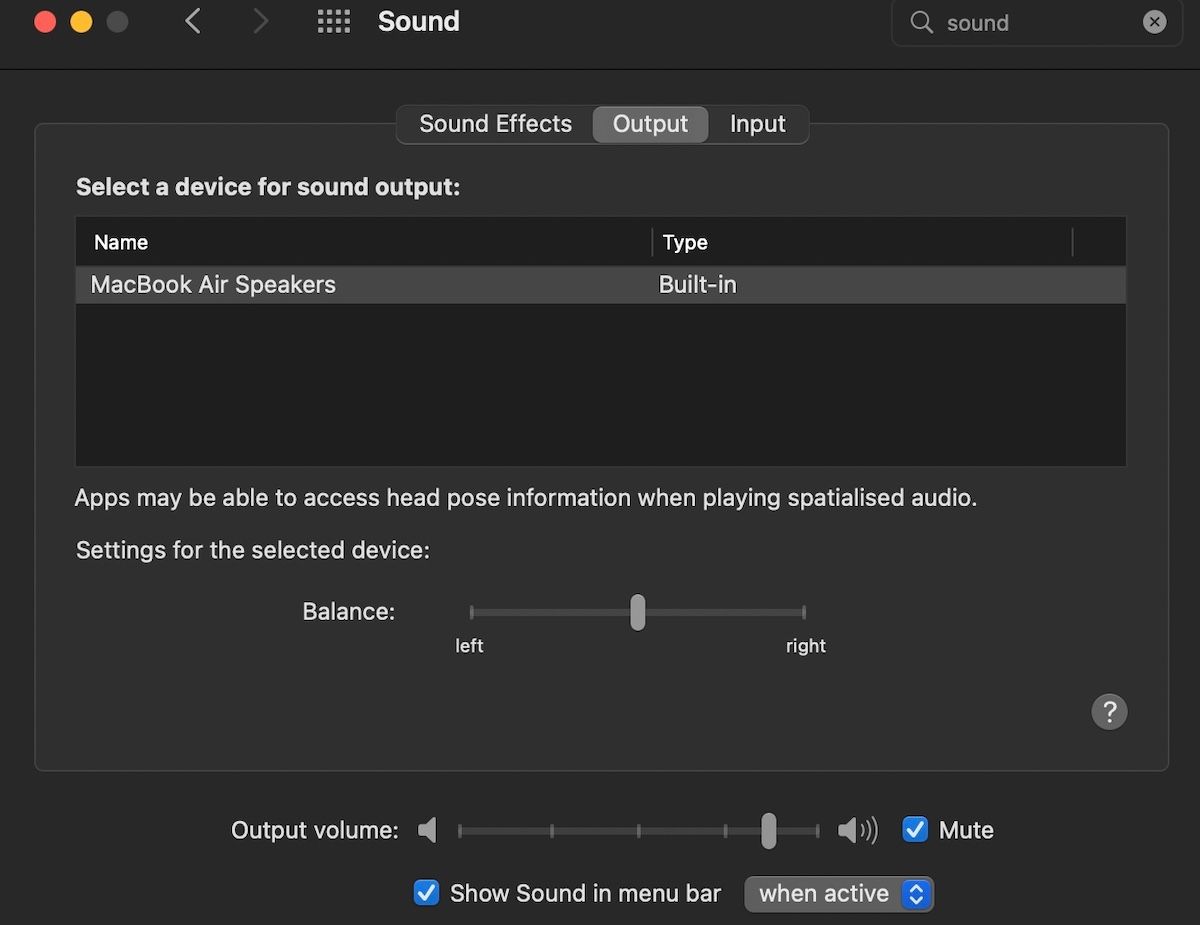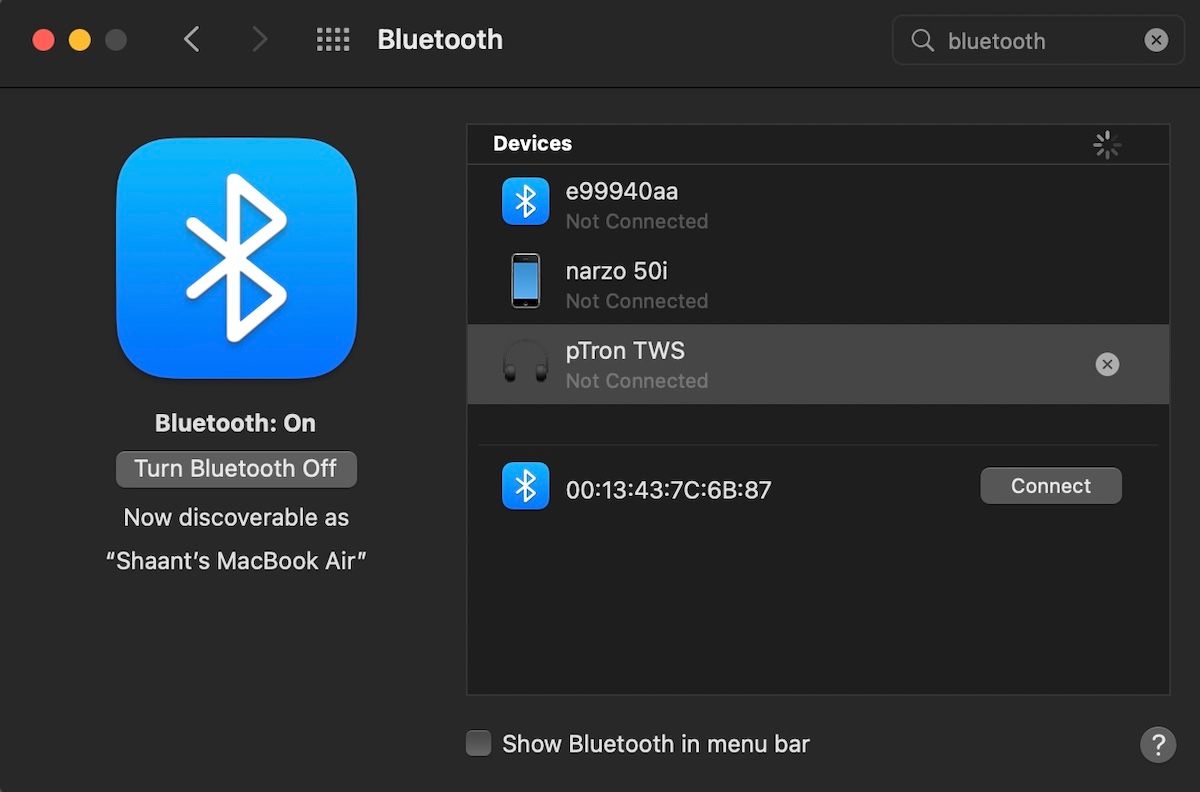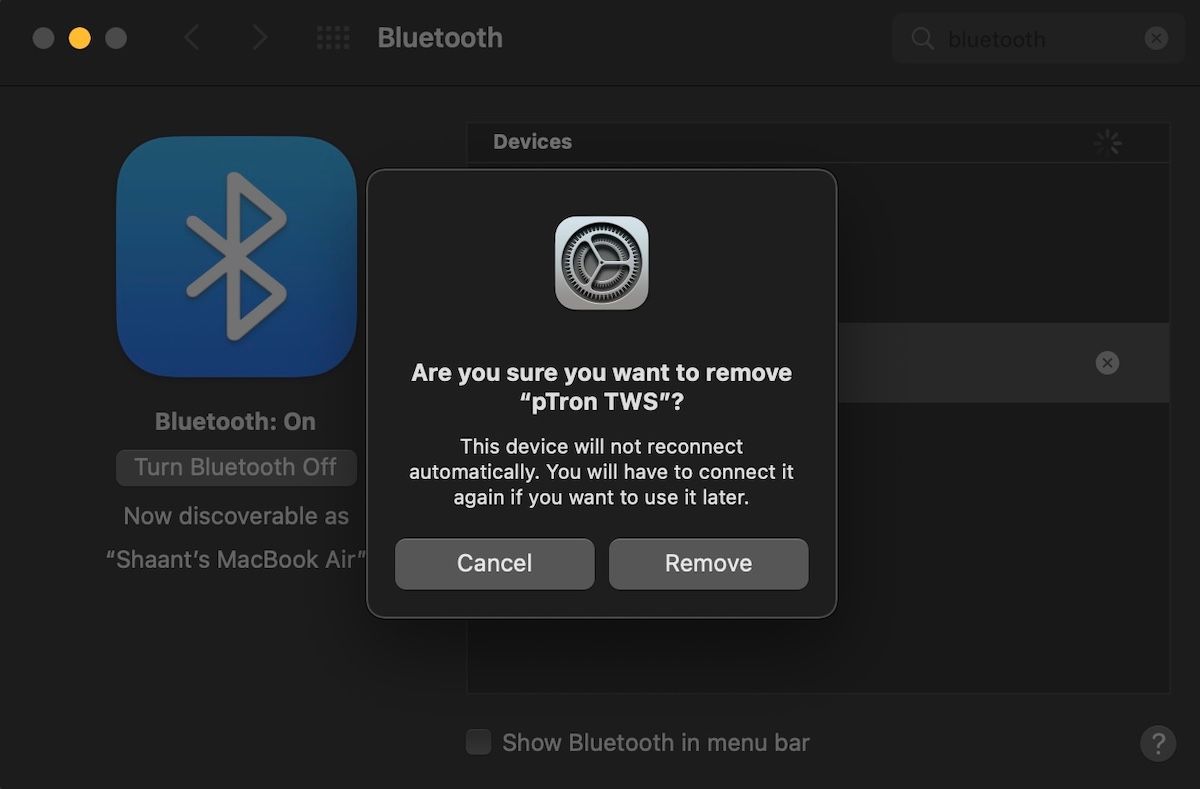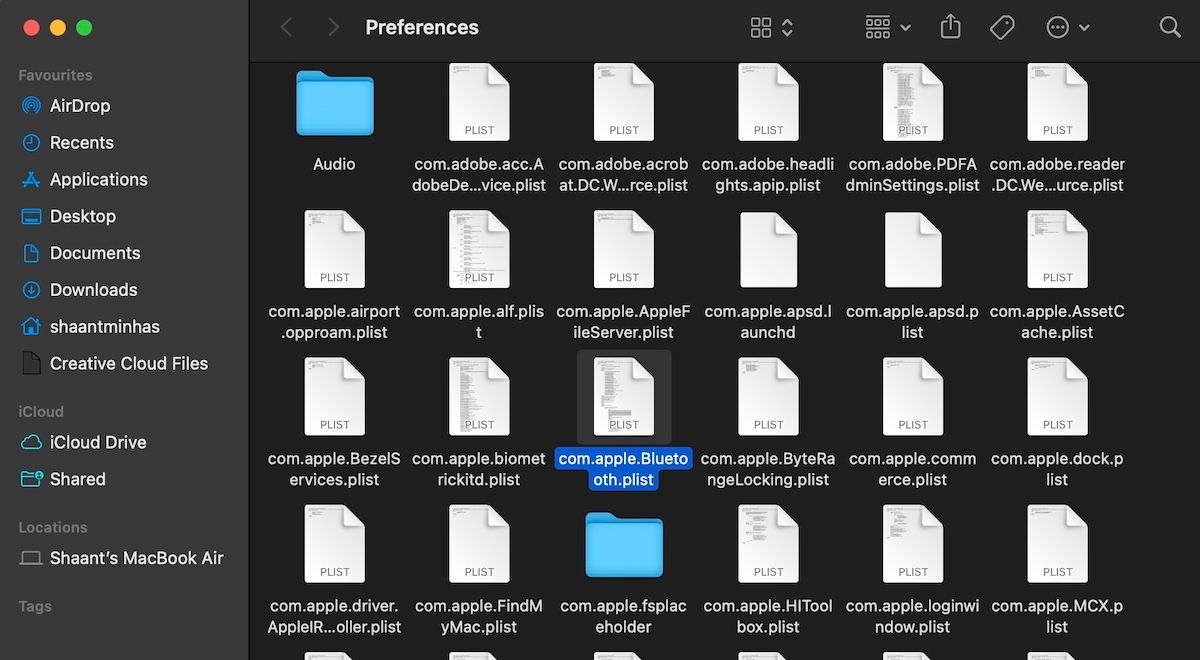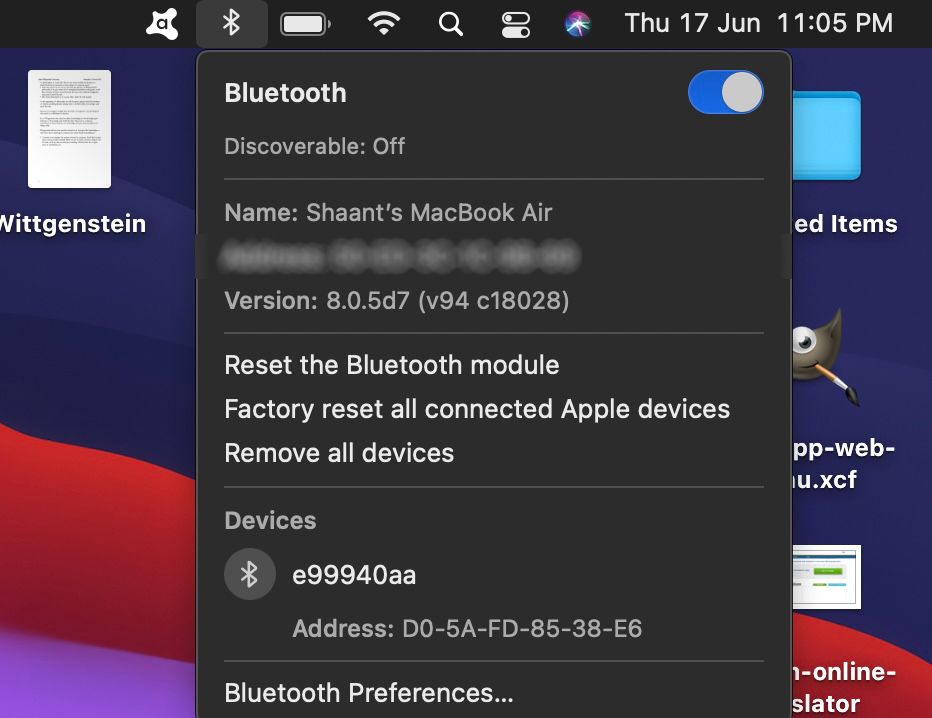Bluetooth is a technology that most people tend to forget about until it doesn't work. For example, you might feel that everything is working great until your AirPods decide not to connect. Most of the time, this is a relatively easy fix. But sometimes it can be a bit tricky.
One of the most frustrating issues is when Bluetooth isn't available on your Mac. At least, that's what it seems like, but can you really be sure?
Without a clear indicator of what's going wrong, troubleshooting Bluetooth on your Mac can be like walking around in the dark. We're here to help. In what follows, we'll dive into different methods you resort to, in case the Bluetooth won't turn on in your Mac.
1. Bluetooth Not Available? Reboot Your Mac
Yes, this is the step you always hear about, but there's a reason for it. More often than not, a reboot will solve a batch of problems with your Mac—Bluetooth issues among them.
Rebooting your Mac by going to Apple > Restart from the menu bar can help to fix almost every Bluetooth problem—particularly those where the Bluetooth module has crashed, and you're experiencing an unresponsive system. According to Apple, removing any USB devices can also help, so you might want to give that a try, too.
Before proceeding, you should also review our introduction to using Bluetooth on macOS to make sure you understand how it works.
2. Check Your Mac's Bluetooth Device Settings
If your Mac's Bluetooth still won't turn on, then you can try out this method. To connect to your Mac, your Bluetooth device needs to be turned on and have some battery charge. This might sound obvious, but it's worth checking before you go to great lengths in fixing an issue that doesn't really exist. If you haven't paired this device before, make sure you're doing it correctly (and that it's visible to your Mac).
If you're trying to get a Bluetooth speaker or other audio device working, have already paired it, and are wondering why you can't hear anything, then you'll need to make sure it's selected as your primary output under System Preferences > Sound > Output.
The same goes for Bluetooth headsets with microphones: head to the Input tab and choose your Bluetooth device there. Your Mac should remember your choice for the next time you connect a wireless audio device.
You can also click on the Volume button in the menu bar and pick your audio device there. If you don't see the button in your menu bar, you may need to enable it. Go to System Preferences > Sound > Output, then select Show volume in menu bar at the bottom of the window.
3. Disable and Re-Enable Bluetooth
To reset Bluetooth without restarting your whole Mac, head to System Preferences > Bluetooth and click Turn Bluetooth Off. You can also toggle Bluetooth by clicking on the menu bar icon—click Turn Bluetooth On to try again.
If you're having trouble using AirDrop on your Mac, toggling this setting can often solve your problem.
You can also try killing the Bluetooth process entirely, though this isn't always effective. Open Terminal and enter:
sudo pkill blued
Then type your admin password and press Return. This should kill and restart the background process, allowing you to try again.
4. Pair Your Bluetooth Device With Your Mac Again
If you've already paired your Bluetooth device in the past, another option is to tell your Mac to forget it and start again. You can reveal all currently paired Bluetooth devices under System Preferences > Bluetooth.
Find whatever is causing you problems, select it, then click on the X followed by Remove to get rid of it.
You'll now need to pair the device again, which most of the time involves holding a button on the device untill a light flashes. Check the device's manual if you're not sure.
5. Reset Your PRAM or SMC
Mac Bluetooth still won't turn on? Don't worry. Though it's a more complicated process, resetting your Mac's PRAM or SMC is one of the most commonly recommended fixes for a whole host of issues.
The system management controller (SMC) is far less likely to be a culprit than the PRAM or NVRAM when it comes to Bluetooth. That said, resetting both can't hurt, since an underlying issue could still be causing your Mac Bluetooth problems.
People often do both of these steps at once, which is why they're listed here together. See our detailed guide on how to reset your PRAM and SMC to perform the process, no matter which type of Mac you have.
6. Delete a Few Key PLIST Files
Your Mac stores information about Bluetooth devices in two files on your hard drive: one that is personal to you and another which is used by all users on your Mac. Deleting these files is often recommended when you encounter Bluetooth issues, as it forces macOS to create fresh files when your computer restarts.
Both files are PLIST files, which are used all over macOS for storing application data in XML format. To delete and recreate these files:
- Control-click on Finder and select Go to Folder.
- Type or paste /Library/Preferences.
- Look for a file called com.apple.Bluetooth.plist and drag it to the Trash.
- Select Go to Folder again and type or paste ~/Library/Preferences/ByHost.
- Look for a file that starts with com.apple.Bluetooth followed by numbers and letters (ending in .plist) and drag it to the Trash.
- Disconnect any USB devices and shut down your computer.
- Turn off your Bluetooth devices and start up your Mac again.
- Enable Bluetooth on your devices and attempt to pair again.
7. Reset Your Mac's Bluetooth Module
As a last resort, if your Mac's Bluetooth is still not fixed, you can try resetting your Bluetooth module to factory settings. This means you'll lose all existing paired connections. If you're still having issues after trying all the above, that's a small price to pay to get your device working again.
If you don't have a Bluetooth icon in the menu bar, head to System Preferences > Bluetooth and check Show Bluetooth in menu bar. Now, press Shift + Option and click on the Bluetooth icon in the menu bar. In the menu that appears, select Debug > Reset the Bluetooth module. You can now try re-pairing your devices.
One final tip here is to start re-pairing your devices by order of importance. You don't want to pair your headphones only to find that the mouse and keyboard you depend on are still having issues, for example. Once you get the important hardware connected, then you can focus on other issues.
Most issues should disappear after deleting system files, resetting PRAM, and reverting your Mac's Bluetooth module to factory settings. If you still have problems, it's likely your Mac is experiencing hardware issues, though you might want to try a fresh installation of macOS, too.
The best option is to purchase a dedicated USB Bluetooth adapter and use that instead. Older Apple computers are more likely to have issues than newer ones, so the price of a repair is often not worth it when compared with the price of a USB dongle. The Hideez Key USB Smart Bluetooth 4.0 Dongle is inexpensive and should do the trick.
This Is How You Fix Your Mac's Bluetooth
And that's all, folks. Hopefully, one of these methods solved the Bluetooth issue for you. Moreover, if you bought your Mac recently, and it's still under warranty, or you purchased AppleCare with your Mac, you should make an appointment with Apple. A technician will look at the problem and fix it for free. This could be indicative of a broader hardware issue with your system, so it's worth a shot.


